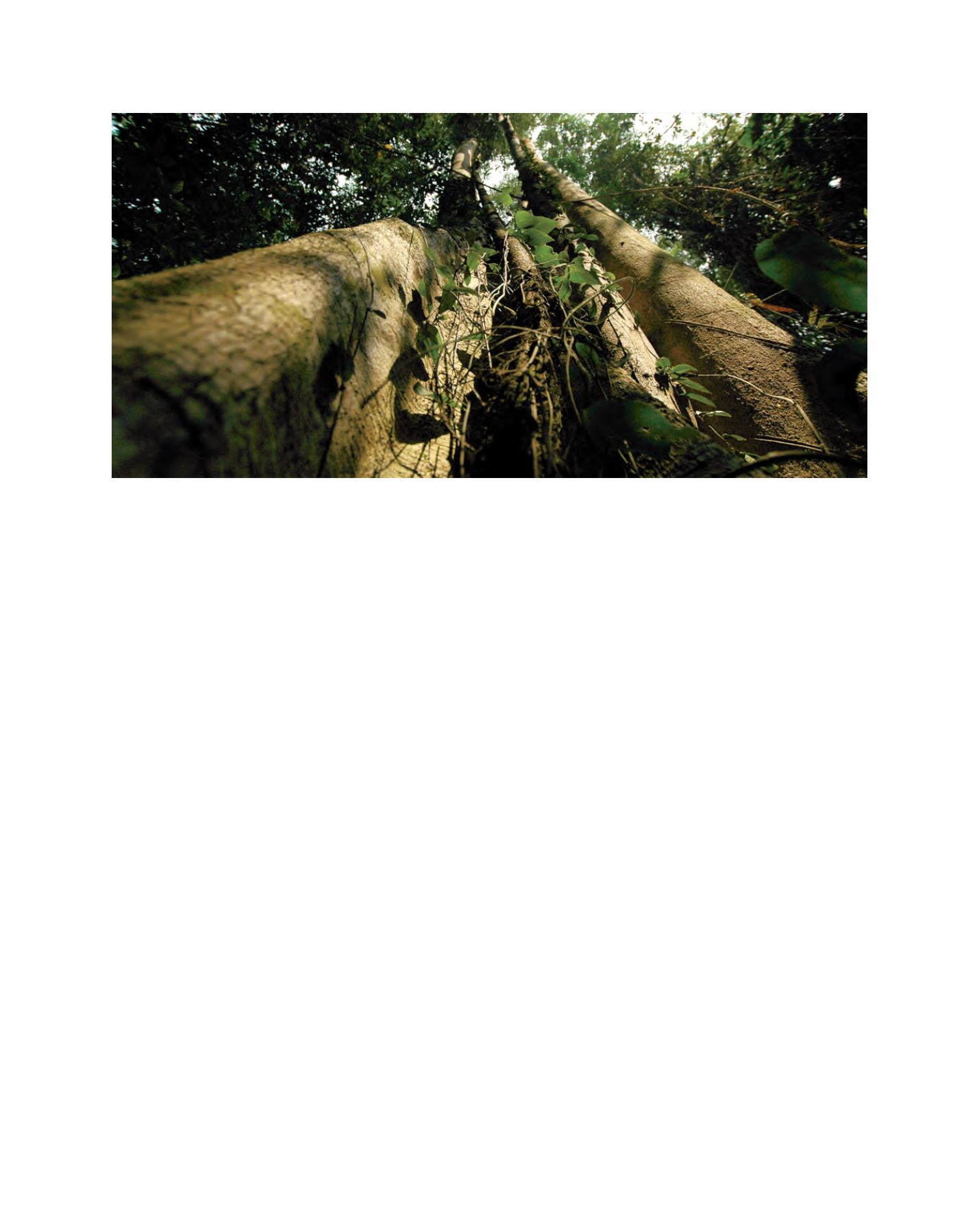

[
] 85
to long-term partnerships – as crucial to ensuring suffi-
cient, predictable, and sustainable funding, and as a
means of assuring contributing countries that they are
getting value for money.
Transparency and adherence to internationally
recognized safeguards are essential
for international
partnerships to work. National control over devel-
opment decisions must be carefully balanced against
adherence to international financial, social and envi-
ronmental safeguards and related transparency criteria.
Reducing tropical deforestation is intrinsically a devel-
opment issue. But REDD+ is different from traditional
development aid, being a payment for a global service.
Clearly, rich countries’ taxpayers need to be assured
that their money is being spent wisely, and is helping to
put forest countries on sustainable, low carbon develop-
ment paths. Existing Official Development Assistance
(ODA) financial intermediation mechanisms need to be
reviewed to suit results-based climate financing. To be
credible and effective, REDD+ requires – and reinforces
– sound political and financial institutions.
Climate and forest action continues
Tremendous progress has been made since Bali in
preparing the world for a global mechanism to reduce
tropical deforestation. Unprecedented pledges for
action and financing have been made. An integrated
multilateral architecture is being created to support all
committed forest countries in their readiness efforts.
National strategies are being prepared, monitoring
systems set up, and institutional capacities developed.
Key countries are pushing rapidly ahead. What is now
required is predictable and sustainable medium- and
long-term funding. This is needed in order to reward
large-scale, verified reductions in tropical deforestation.
President Yudhoyono of Indonesia has made his country a leader
on climate change through bold unilateral commitments. He has
also invited developed countries to join a partnership to protect
Indonesia’s remaining forests and peatlands, and Norway is proud
to be a founding member. Indonesia has established a suspension
on new concessions for the exploitation of peatland and forests. By
2014 the partnership should have evolved into to a pure ‘contribu-
tions for verified emissions reductions’ model.
Other leaders are emerging: Ministers from the Congo Basin coun-
tries have joined forces in the Congo Basin Forest Partnership. The
Democratic Republic of Congo has made substantial progress in prepar-
ing for REDD+ and is now a best-practice example of how multilateral
initiatives can work jointly in support of a government’s strategy.
Key elements for success
Based on the experience of Brazil, Guyana, Indonesia and other
countries, the following key principles appear to be crucial to
making REDD+ strategies effective and sustainable.
Strong and broad-based national ownership
is needed, and REDD+
needs to be integrated into the country’s overall strategy for poverty
alleviation and low-carbon development. To sustain public support,
sectoral REDD+ strategies must be seen as integral priority elements
of the national development strategy. The REDD+ strategies must
also focus on optimising the additional benefits with regard to
biodiversity, livelihoods and climate change adaptation. Relevant
stakeholders, including indigenous peoples and local communities,
must be actively involved in the formulation and implementation
of the national strategy.
Payments for verified emission reductions, based on robust and
independent monitoring, reporting and verification (MRV), must be at
the heart of the approach taken
. This will target policies and invest-
ments in such a way that they deliver results and only results-based
approaches are likely to generate the financing needed. All three
countries outlined here consider payments for verified emissions
reductions – supported by contributing countries willing to commit
Standing forests are important as they preserve rainfall patterns and help communities and countries to adapt to climate change
Image: Elisabeth Brinch Sand, Ministry of Environment, Norway
















